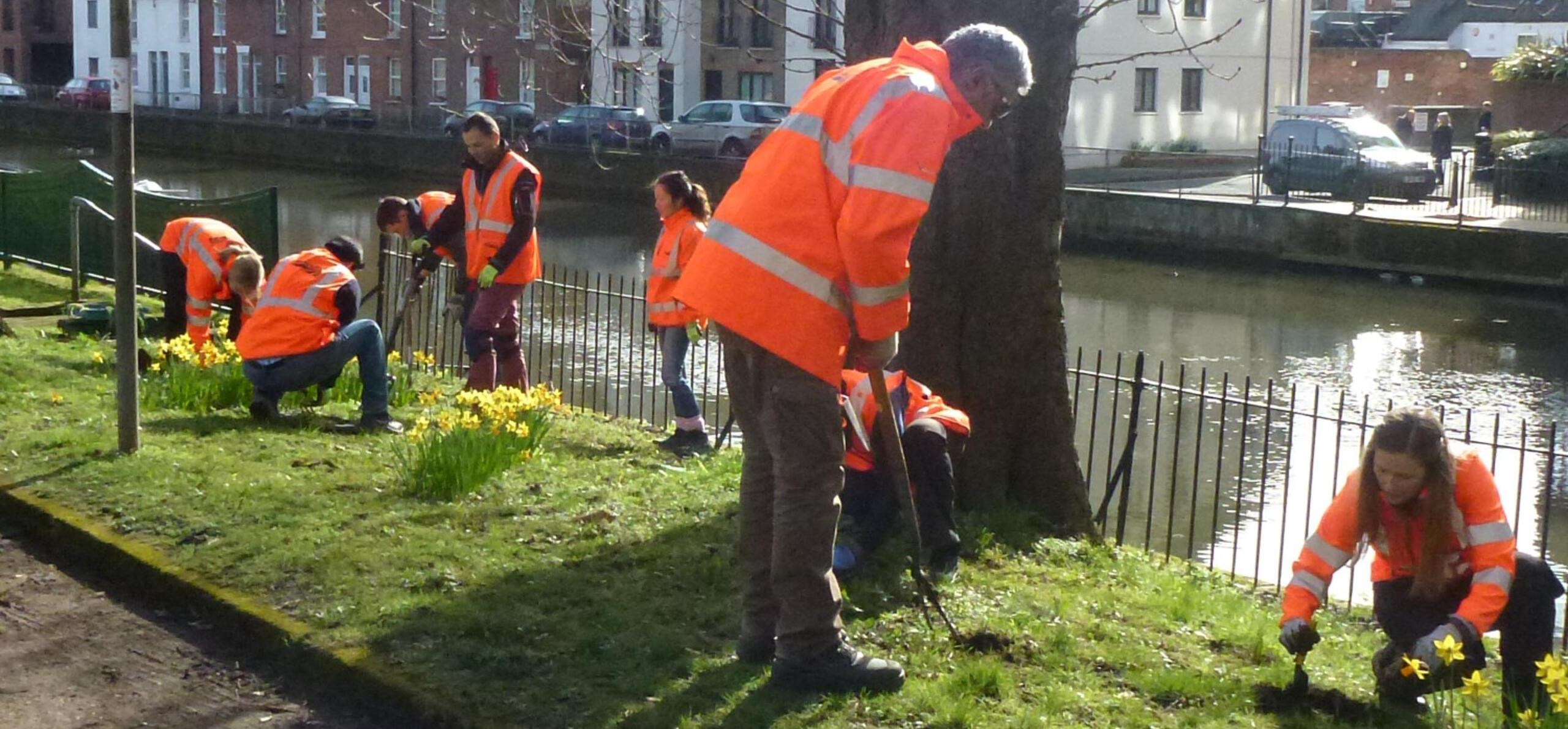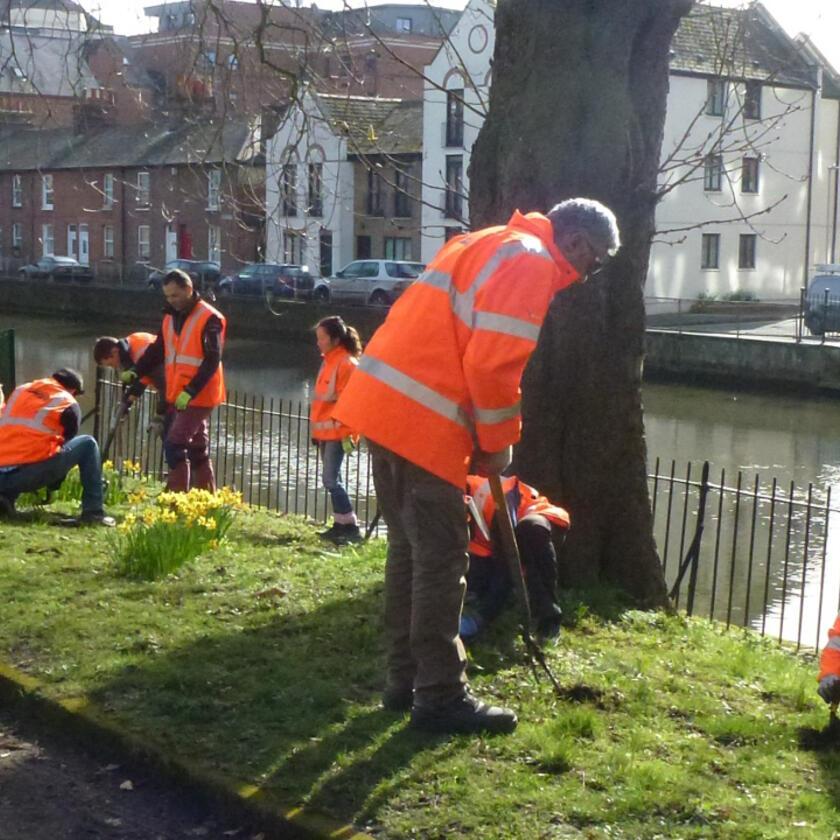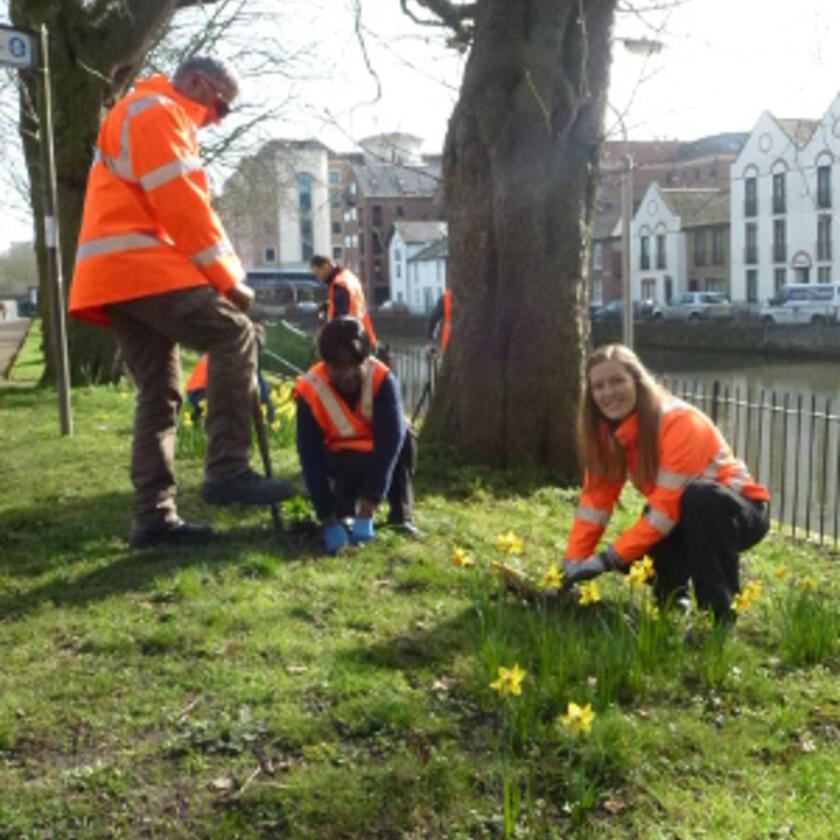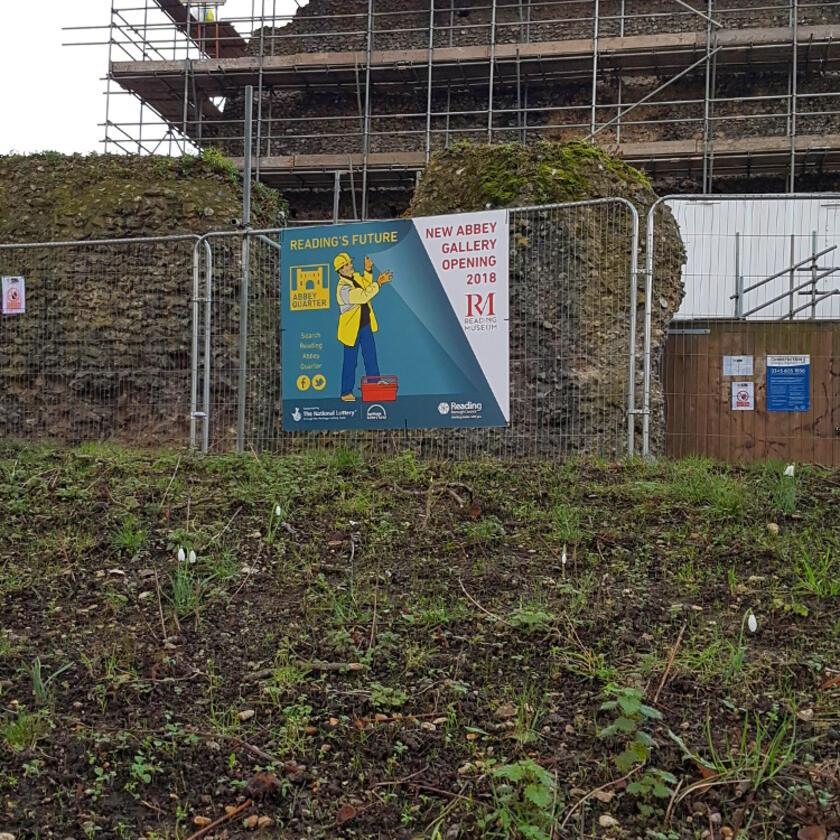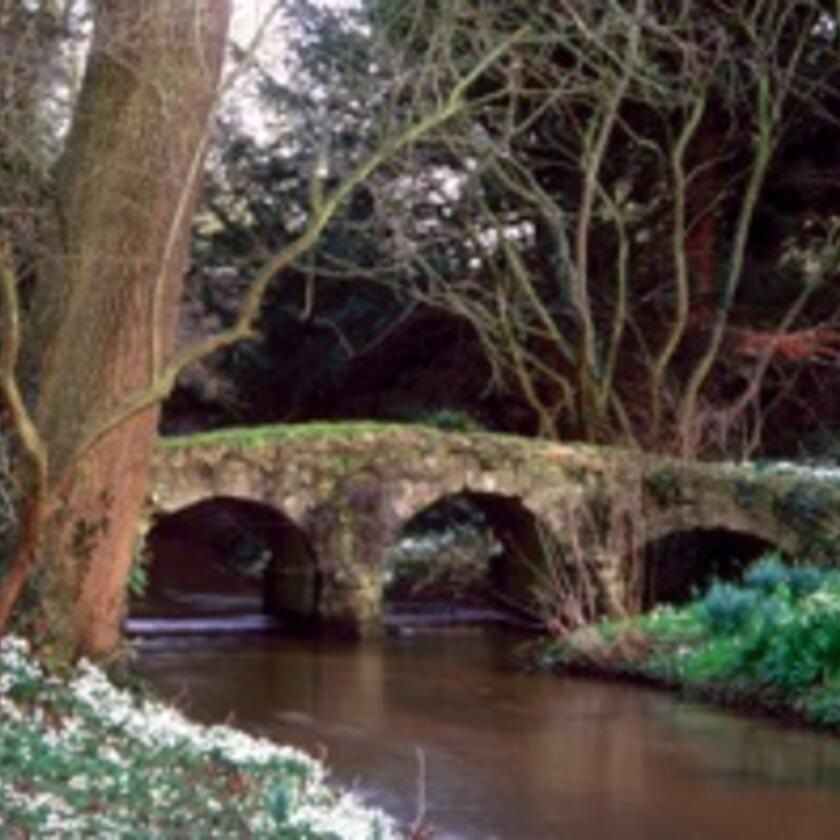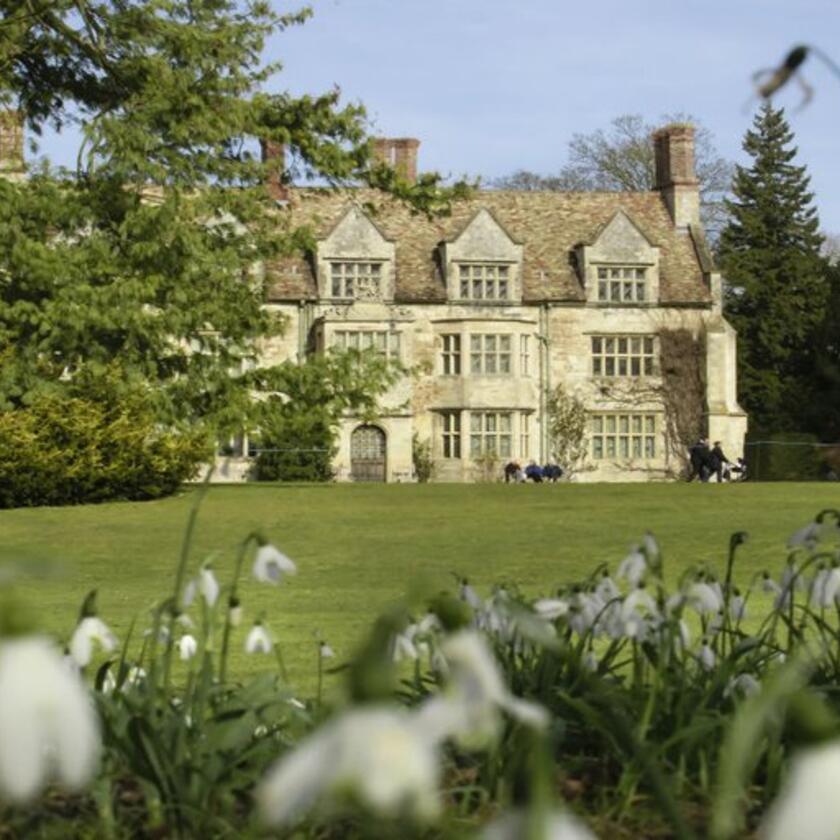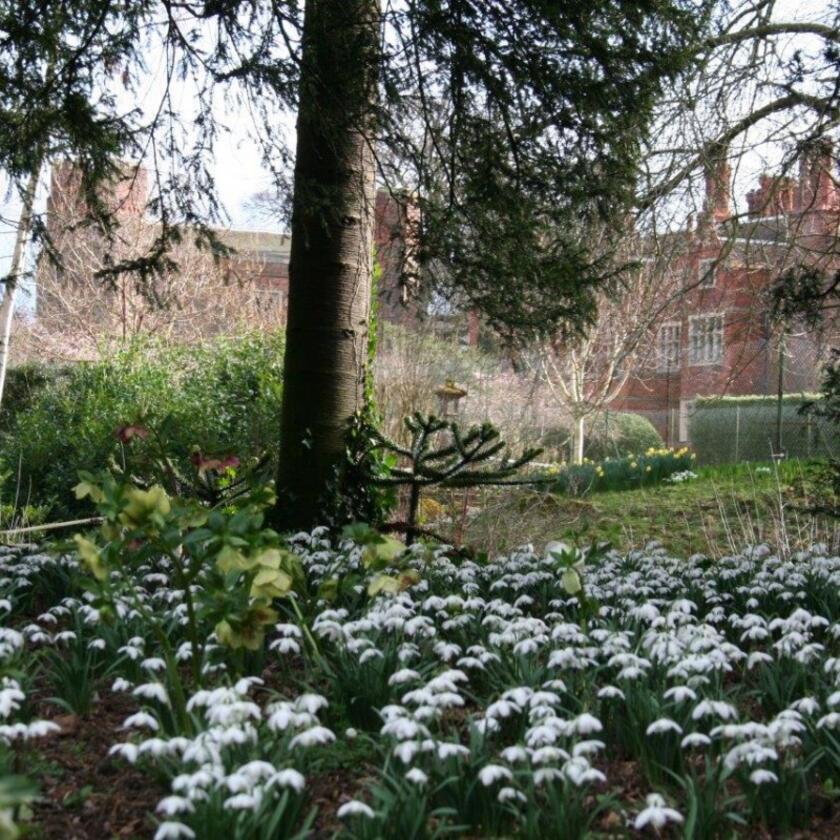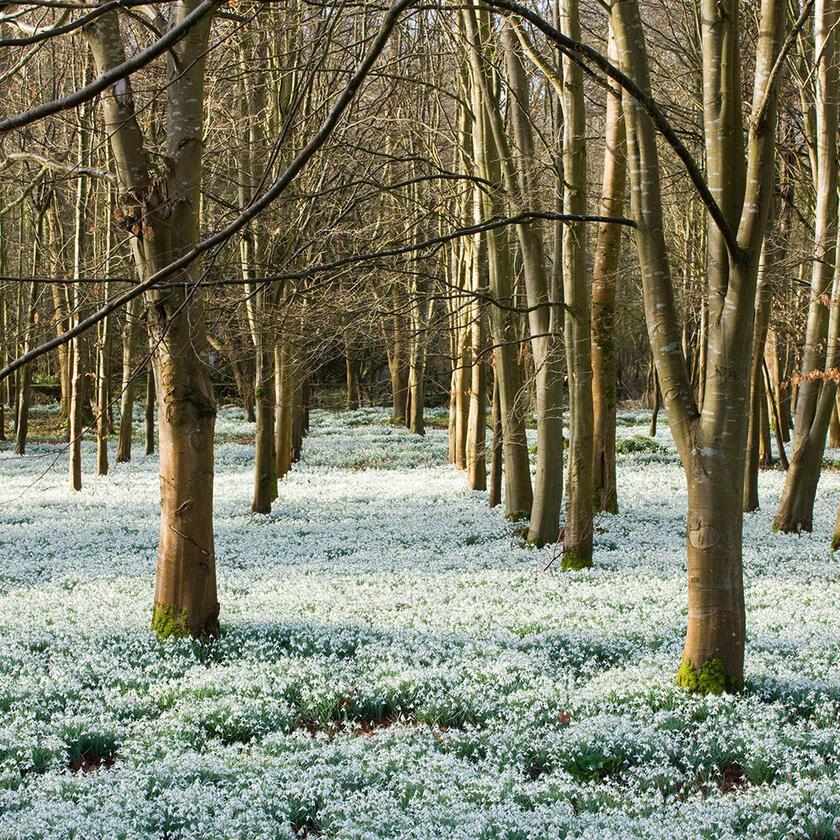Snowdrops are acumen in!
Have you noticed the snowdrops coming through on Chestnut Walk in Reading? It’s almost a year since a group of keen volunteers planted 1,000 snowdrops to start a spring bulb trail by the Reading Abbey Ruins.
Organised by Reading Museum with Reading Borough Council’s parks team, the snowdrops volunteer project came about after Network Rail enquired about projects for their Western Rail Link to Heathrow team to do for their ‘employee charity days’. Individuals often come to Reading Museum to ask about volunteering but finding a project for a larger group of people presented us with a new challenge!
At the same time, the new ‘Reading Abbey Revealed’ project had just started, so this was a chance to think creatively and how we could work with our local business community. With the help of up to a dozen people on offer, this was a great opportunity to get something big done with a Reading Abbey link. As this was winter of 2017, we noticed the links between abbeys and snowdrops and decided that Reading Abbey needed its own snowdrop trail!
So, in March our 'business volunteers' joined some Friends of Reading Museum volunteers for a morning of planting common snowdrops ‘in the green’ along Chestnut Walk to supplement the 6,000 crocus bulbs already established there.
Abbeys and snowdrops
Many abbeys across the UK are renowned for their snowdrop displays including Walsingham Abbey in Norfolk, Hodsock Priory in Nottinghamshire and Anglesey Abbey in Cambridge, which was also founded as a hospital by King Henry I in 1135. The Norman monks at Welford Park, in Newbury, planted their snowdrops to decorate their Church for the feast of Candlemas and also for medicinal use. They harvested snowdrops and used to rub them on the temple of people suffering from “mal au tete”.
It’s now known that the common snowdrop contains an alkaloid, galanthamine, which has been approved for use in the management of Alzheimer’s disease in a number of countries and in the treatment of traumatic injuries to the nervous system.
Snowdrops have had many names over time from dingle-dangles and snow piercers to February fair maids because they are one of the earliest bulbs to flower. The common snowdrop or Latin name ‘galanthus nivalis’ was described by the Swedish botanist Carl Linnaeus in his ‘Species Plantarum’ in 1753 and given the specific characteristic ‘nivalis’, meaning snowy or snow and galanthus means with milk-white flowers.
One name in particular - Candlemas Bells – refers to Candlemas Day which is today (February 2), a Christian feast of Purification. The festival is also called Candlemas because this was the day that all the church's candles for the year were blessed and many people place lighted candles in their windows at home in the evening.
Like some other Christian festivals, Candlemas has some of its origins from paganism. In pre-Christian times, it was the festival of light. This ancient festival marked the midpoint of winter, half way between the winter solstice (shortest day) and the spring equinox. Some people also believed that Candlemas predicted the weather for the rest of the winter.
Candlemas Day poem
If Candlemas Day be fair and bright
Winter will have another fight.
If Candlemas Day brings cloud and rain,
Winter won't come again.
Traditional
Snowdrops are widely seen across the UK, but this wasn’t always the case. The earliest common snowdrops came from southern-central Europe, through the eastern Mediterranean, down to the Middle East with the highest concentration in the area around Turkey and the Caucasus. They were introduced to Britain, Belgium, The Netherlands, Norway and Sweden. We know from there were in the UK by the 16th century as illustrated in by the English herbalist, John Gerard in his ‘The Herball’ or ‘Generall Historie of Plantes’ in 1597.
As part of the Reading Abbey Revealed project, Reading Museum will be looking at future opportunities to work with local businesses to help offer new skills to their staff for their ‘employee charity days’. If your company would like to be involved, please contact our Abbey Volunteer Co-ordinator.
Snowdrops across Reading
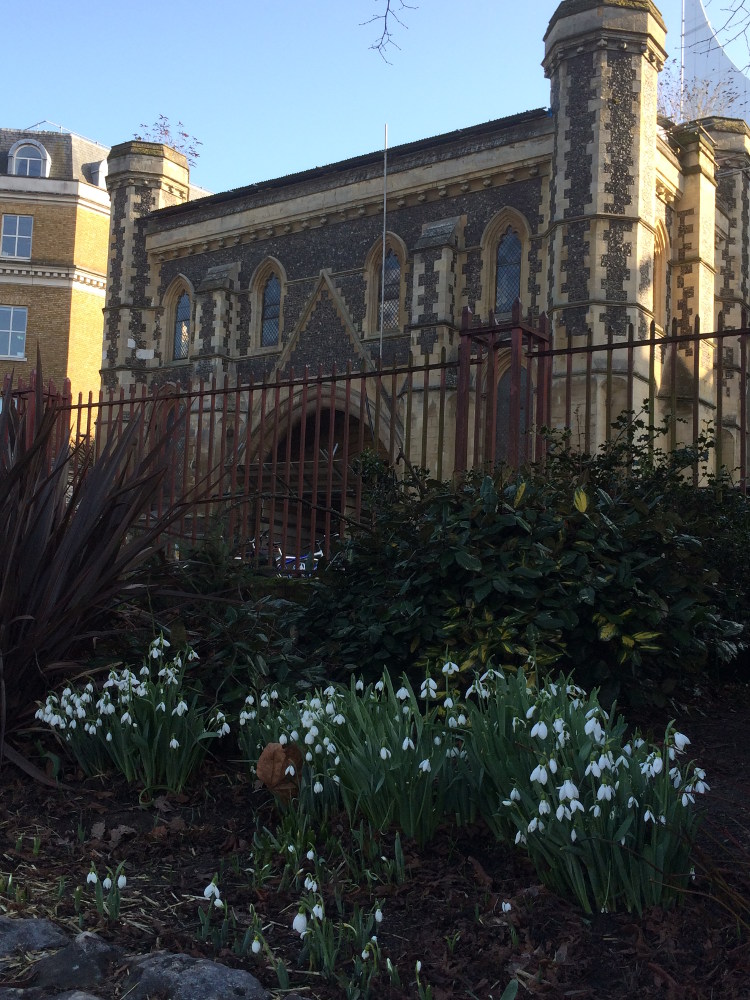
This is one of our favourite pictures - snowdrops near the Reading Abbey Gateway (2017)
If you love snowdrops as much as we do, why not share your pictures of snowdrops around Reading on this Candlemas Day? Tweet them to us Reading Abbey Quarter @RdgAbbey or post them to our Reading Abbey Quarter Facebook page.
Sources
Plants of the World Online –Royal Botanic Gardens – Kew
https://parksandgardensuk.wordpress.com/2014/01/27/snowdrop-days/
